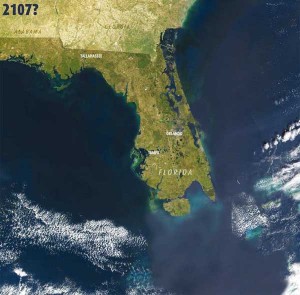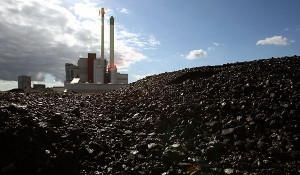In the Northern Hemisphere we are into the “Dog Days” of summer, a time when so many are on vacation, and the pace of work eases to a degree. But our human penchant for discovery and invention never seems to stop even in the languid heat of summer.
And speaking of heat, one of this week’s headlines focuses on the runaway greenhouse effect. Another looks at climate change and its impact on our increasingly urbanized sea coasts. We also describe how politics interferes with decision making on the climate file. And not to be forgotten is the continued battle between the forces pro and anti GMO crops. And finally we look at helium the gas that makes us talk funny when we breathe it in, but also why we shouldn’t because it’s becoming increasingly rare.
So enjoy!
New Study Simulates Runaway Greenhouse Effects – a Warning to Us Here on Earth
We live on a pretty benign planet. Those seeking Earthlike planets elsewhere in our galaxy call the zone in which such planets reside, Goldilocks. That is they are not too hot and not too cold – just right for life. But what differentiates Earth from Venus our closest neighbour? The answer is a runaway greenhouse effect which certainly was triggered on Venus billions of years ago leading to the overheated inferno we see today on the left in the picture below.
Could it happen on Earth? Will it? Not in our lifetime but certainly at some future time as the Sun ages increasing in luminosity. Can our current carbon emitting behaviours create a runaway greenhouse? Not according to the study appearing this month in Nature Geoscience. But the mechanics of what causes a world to overheat are well explained in the report which used a new computer model to determine the thermal radiation threshold needed to begin the runaway greenhouse process. The researchers conclusions – it may be easier to initiate than previously thought and as a result the parameters of what is a Goldilocks zone may require alteration as we search for other Earths within our galaxy.
For those of you considering joining Mars One, the study concludes that Earth’s runaway greenhouse phase is probably 1.5 billion years in our future. That leaves plenty of time for terraforming Mars although as the Sun ages Mars, too, will become a victim.
Climate Change and Coastal Cities – What’s in the Forecast?
In this month’s Proceedings of the National Academy of Sciences, you can read about cities at risk from global climate change. This time it is not about air temperature but about rising sea level which has been calibrated at 2.3 meters (over 7 feet) for every Celsius degree (1.8 Fahrenheit) increase in atmospheric temperature. The study states unequivocally that regardless of what we do now to reduce carbon emissions the seeds have already been planted that will drive rising sea levels for many centuries into the future. The implication – “the eventual crippling or loss of most coastal cities in the world.”
Current best estimates of sea level rise in the 21st century lies somewhere between 1.2 and 1.9 meters (approximately 4 to 6 feet). The enduring effect of current CO2 output, the report states, will last at least 2 millennia (that’s 2,000 years). So for those of you living in New York City, fresh from the devastation of Hurricane Sandy, you might say “you ain’t seen nothing yet.” Florida, much of which lies a few meters above sea level will experience massive land loss (check out the image below). And considering the rest of humanity with more than a 650 million of us living along seacoasts, these findings have profound implications.
U.S. Administration Believes in Coal States Energy Secretary
Of the many stories I read this week this one raised my eyebrows the most. President Obama recently stated he will make a decision about the Keystone XL pipeline based on its net carbon impact. Yet in a visit to a National Energy Technology Laboratory in the heart of coal country, West Virginia, his Energy Secretary stated that the administration is committed to coal as part of the national energy strategy.
The American administration has spent to-date more than $6 billion in trying to develop clean-coal, a strategy that captures CO2 from coal-fired power plants and sequesters, recycles or repurposes it. But viable clean-coal technology has not gone beyond pilot projects and is still 15 years away according to the experts.
The clean-coal mission is purely political and has more to do with shoring up votes in states where coal is mined or burned to generate electricity. But no one in the political arena has the nerve to state this. And in the battle to win Congress and the White House, turning Red into Blue states or viceversa it seems the issue of carbon and its contribution to atmospheric warming goes to the back of the room.
The Energy Secretary states, “Our job is to see the marketplace has choices that are as economical as possible….our job is not to pick market shares; it’s to provide choices.” You’ll be happy to know that coal consumption is up this year in the U.S. Why? Because the rising price of natural gas has made coal more competitive.
Biotech Firms Acknowledge Failure in Overcoming the Public’s Fear of GMO Crops
In an effort to educate the public about genetically modified organisms the major developers of GMO crops have created GMOAnswers.com, a dedicated site that explains the history and science behind biotechnology. Who are the companies behind this initiative? All the ones that the anti-GMO movement love to hate – Monsanto, Syngenta Chemical, BASF, Bayer CropScience, Dow AgroSciences, and DuPont.
The five principles behind this initiative:
- Respecting people around the world and their right to choose healthy food products that are best for themselves and their families;
- Welcoming and answering questions on all GMO topics;
- Making GMO information, research and data easy to access and evaluate and supporting safety testing of GM products; including allowing independent safety testing of our products through validated science-based methods;
- Supporting farmers as they work to grow crops using precious resources more efficiently, with less impact on the environment and producing safe, nutritious food and feed products;
- Respecting farmers’ rights to choose the seeds that are best for their farms, businesses and communities and providing seed choices that include non-GM seeds based on market demands.
Don’t Waste The Helium in That Balloon So You Can Talk Funny – We’re Running Out And It’s Serious
Back in March of this year The Huffington Post ran a headline “U.S. Strategic Helium Reserve Dwindles, Prompting Supply Concerns And Legislative Action”. Really? You mean the stuff we get in balloons so they can float? Heck, a helium-filled balloon hardly costs anything so it is hard to believe it is a scarce commodity. But indeed it is because it is so light the gas escapes easily floating out into space whenever it’s released.
But helium is used in far more places than just balloons. It is used in MRI scanners in its liquid form. It is used to study quantum effects in physics. It cools down the Large Hadron Collider. Without it we would never have discovered the Higgs Boson “God” Particle. NASA uses it to purge fuel tanks in its rockets.
Out in space helium is quite abundant. In fact, on the lunar surface one of the ideas that is driving us back to our natural satellite is the presence of a helium isotope, Helium-3 which could be mined and exported to Earth for use in nuclear reactors producing no radioactive byproducts.
But here on Earth helium is rare. All the helium we get today comes from natural gas deposits. We use it for a wide range of applications and do not recapture it. The result, it continues to disappear at an alarming rate and will soon run out. Best estimates say within 30 years.
What can be done? Other than going to the Moon to get the helium there, we here on Earth can conserve helium saving 8% of what we use right away by not putting it in birthday balloons. In addition we can make it attractive for natural gas field operators to capture the helium they currently vent and do this by raising the price on helium to represent its true market value. And finally wherever we use helium whether for medical or other scientific and industrial pursuits we should make it mandatory that we recapture and recycle the gas.
A Postscript
There were lots of stories we didn’t headline this week and maybe you found some that you think would be a good fit for this blog site. I encourage you to send me your ideas or if you have something you have written and would like to guest blog here, please drop me a line at info@21stcentech.com.
Thanks for dropping by.
– Len Rosen




















((But viable clean-coal technology has not gone beyond pilot projects and is still 15 years away according to the experts.))
I’m guessing there will never be “clean coal.” Coal is attractive as a fuel only because it’s abundant, cheap, and easily storable for indefinite periods. If you spend enough money to make it “clean” it’s no longer cheap, and then the market will abandon it. One might argue that coal is something like tar sands. It’s feasible to combine natural gas with coal (or tar sand) and produce synthetic liquid hydrocarbon transportation fuels. Synthetic diesel or gasoline, which would be no more or less clean than petroleum based fuels. Coal might be thought of as a cheap high energy density storage medium for natural gas. Shell’s Pearl plant has already demonstrated direct conversion of natural gas to liquid diesel fuel is technically feasible and highly economical (diesel fuel production costs are about $0.50/gal). It’s likely that sort of process will always be cheaper than hydrogenating coal, but more of the energy is wasted in driving the process, and the wasted energy is pumping more CO2 into the air. The only way there will ever be significant amounts of “clean” coal is if government steals from the most productive parts of the economy and transfers what it stole to less productive parts of the economy. It’s unclear what, other than fear of jail or hell, could limit that sort of waste, fraud, and abuse. The churches and governments have acted in ways that vastly diminish the plausibility of those threats.
I too believe clean coal is a fool’s errand. But promising it and throwing money at it buys votes in every country where coal mining employs hundreds of thousands.